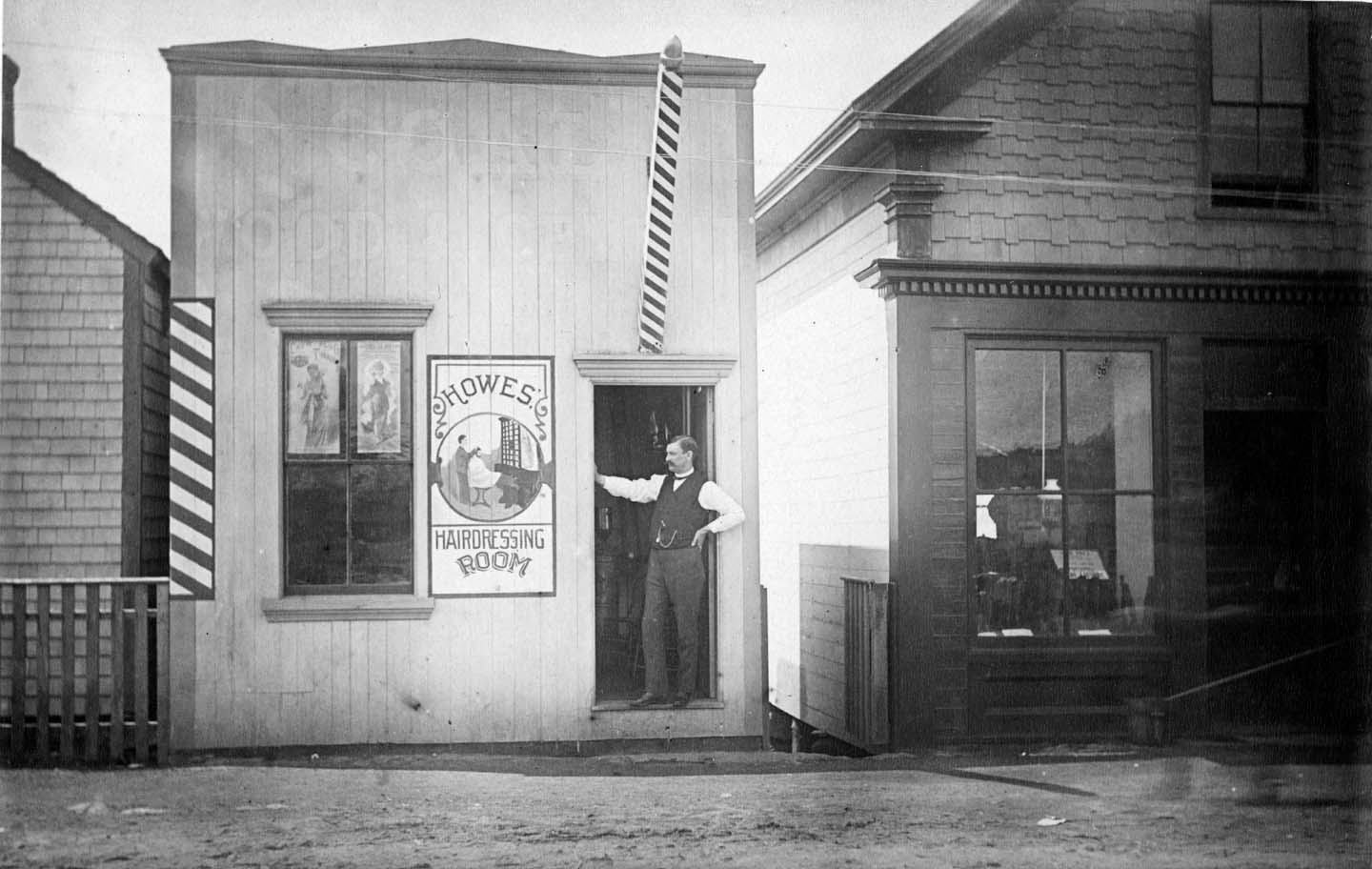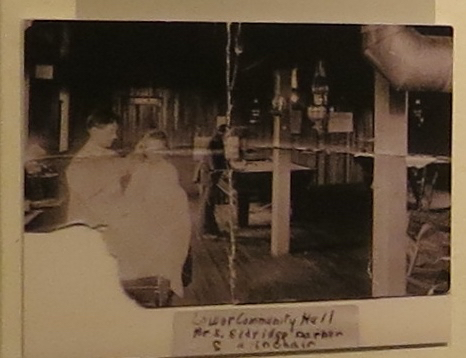- Introduction
- Early Years
- Fishing and Whaling
- The Guano Company
- The Fish Market
- Stores and Markets
- Drug Stores
- Garages and Parking Lots
- Coal
- Restaurants, Ice Cream Parlors, Bars
- Tea Rooms
- Hotels and Boarding Houses
- The Breakwater Hotel
- --------
- Walter Luscombe, Entrepreneur
- Franklin Gifford, Painter
- Michael Walsh, Gardener
- Barbers
- Blacksmiths
- Carpenters
- --------
- About
Barbers

A barber shop stood on the block near the Eel Pond draw bridge for about 70 years – 1880s to the 1960s.
The photo shown here, of Howes Hairdressing Parlor, was taken about 1890. Howes’ establishment was in the middle of the block between Railroad/Luscombe Avenue and the bridge. The red and white striped barber pole used to be a standard “sign” for a barber shop. (The red stripe represented blood, from the period when barbers were also surgeons -- from the Middle Ages to the 1800s when such medical procedures became the province of professional physicians --and the white stripe represented bandages.)
In the mid-1900s, Al Blanchard was the most well-known of local barbers. His shop was a tiny building on the Great Harbor side hanging over the channel, previously occupied by a barber named Levesque. Its structure became part of the Fishmonger Restaurant (now Water Street Kitchen) in the 1960s. Al and his wife also ran a boarding house on Millfield Street.
Another barber was Sherman Eldridge. Shown here is Sherm cutting hair in the basement of the Community Hall, which he rented. Later Sherm’s barber shop was in the rear of a building on the opposite side (Eel Pond side) of Water Street (Number 97). His wife made sandwiches for worker’s lunches.
The need for a barber was an almost daily requirement in the 1800s and up through World War II. Men went daily to be shaved, if they did not wish to risk using a single-blade razor on their own throats and faces. Until the invention of the “safety razor” around World War I and the disposable blade for refilling such razors, released by Gillette in 1947, this routine was rarely done at home. Haircuts were given more often as well when well-groomed short hair was standard.
Barber shops are also places of social interaction and public discourse. In some instances, barbershops are also public forums. They are the locations of open debates, voicing public concerns, and engaging citizens in discussions about contemporary issues. They were also influential in helping shape male identity.


